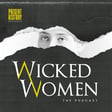
Story of a Murder
On July 13, 1910, on a quiet suburban street in Camden Town, London, a grisly discovery shattered the illusion of domestic peace. Beneath the floorboards of 39 Hilldrop Crescent, the dismembered remains of music hall performer Belle Elmore were unearthed. The Victorian house, prim, respectable, and unassuming, had become the scene of one of the most sensational murders in British history.
As the press descended, the story gripped the world. Belle’s husband, the mild-mannered doctor Hawley Harvey Crippen, and his lover, the demure and seemingly obedient Ethel Le Neve, had vanished, fleeing across the Atlantic in disguise. It was the first time in history that wireless telegraphy would be used to capture fugitives in real time. Their arrest aboard the Montrose, just before reaching Canada, turned the case into a media spectacle of unprecedented scale. London newspapers dubbed it “The Crime of the Century.”
But behind the headlines lies a much more complicated story, one shaped by gender, class, performance, and power.
In today’s episode of I’m joined by award-winning historian Hallie Rubenhold, author of the book Story of a Murder: The Wives, The Mistress, and Dr. Crippen. In our discussion we focus on the two women most deeply entangled in this tale: Belle Elmore, and Ethel Le Neve. This isn’t just a story about murder. It’s about who gets to be remembered, who gets vilified, and how history treats women who refuse to conform.
Disclaimer: This episode discusses topics that may not be suitable for all audiences. Viewer discretion is advised.
Hosted on Acast. See acast.com/privacy for more information.
